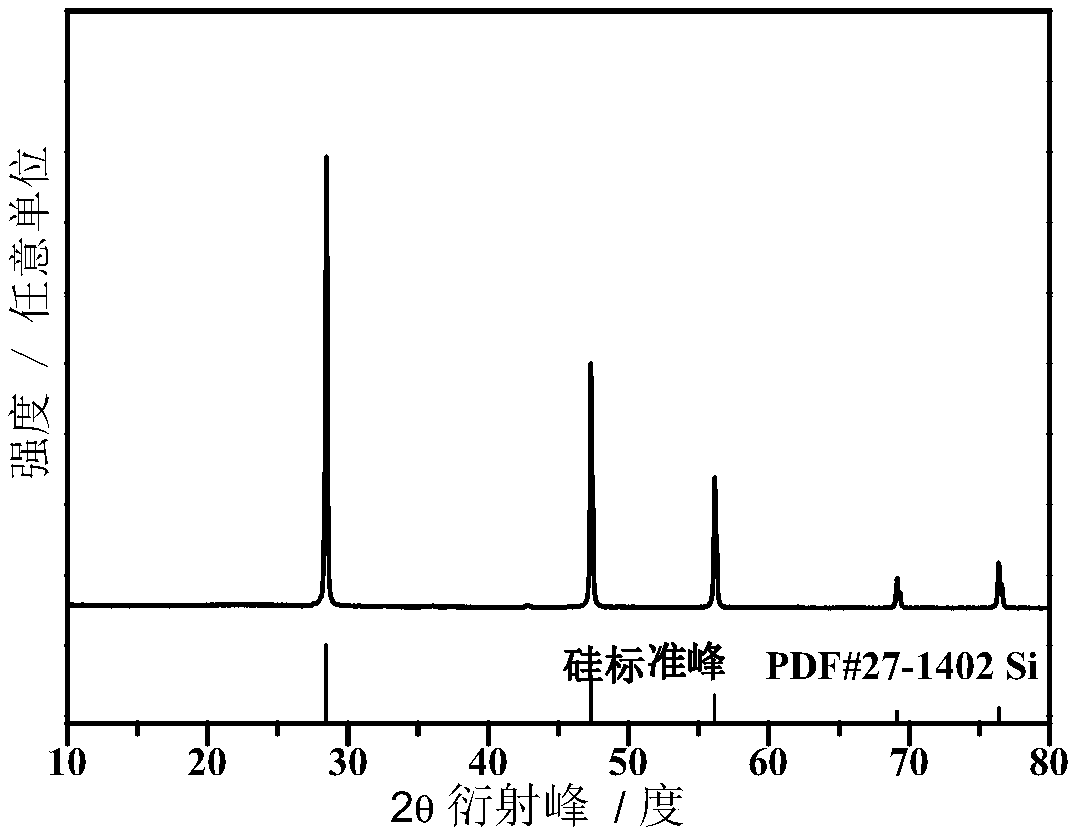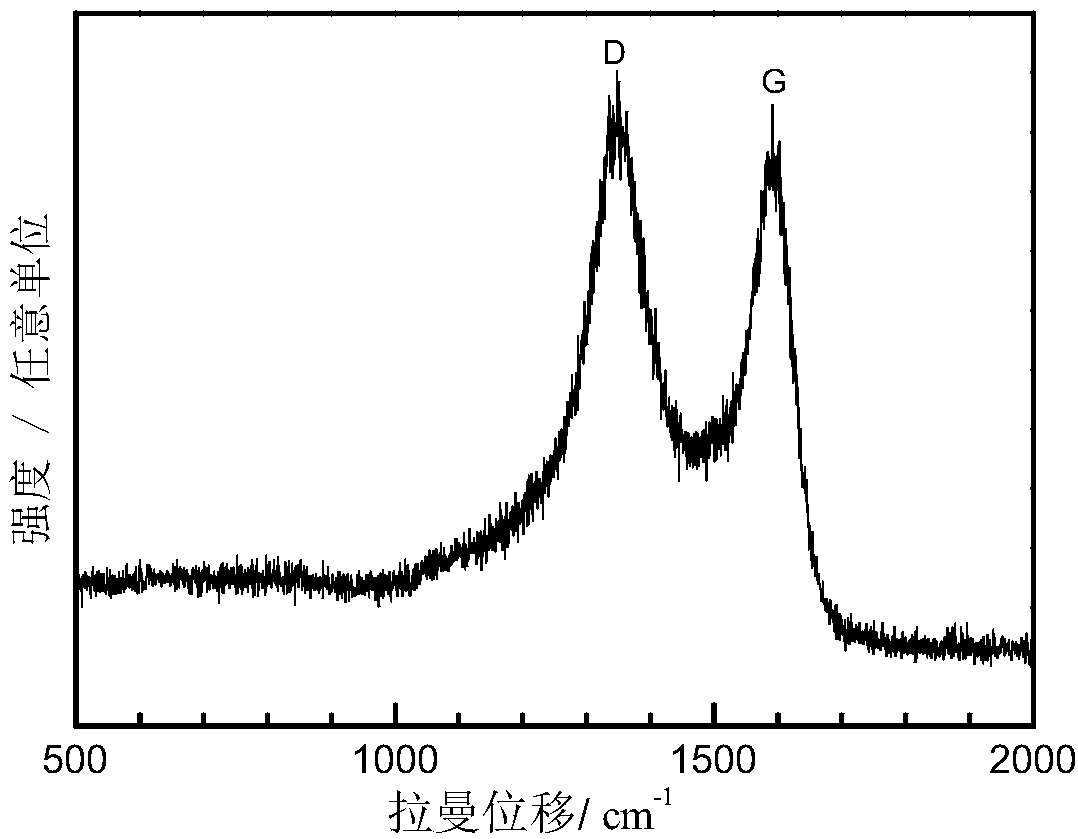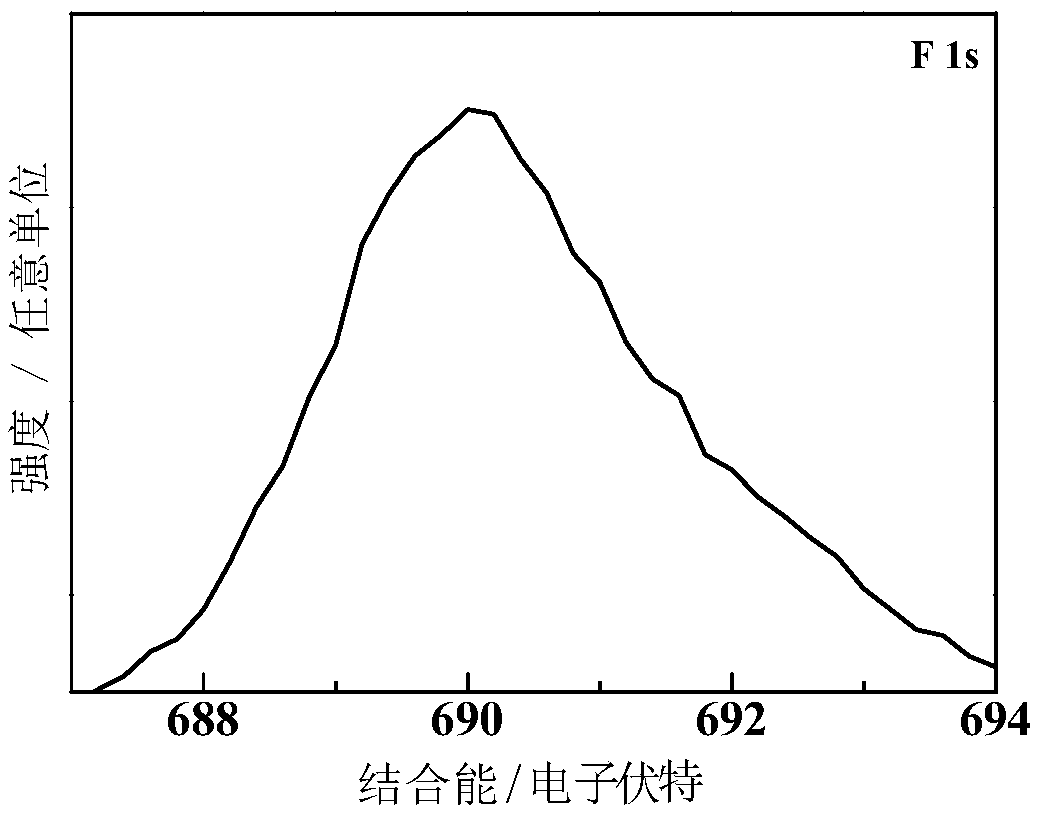Surface-modified silicon-carbon composite material and preparation method and application thereof
A technology of silicon-carbon composite materials and carbon composite materials, applied in the direction of electrical components, electrochemical generators, battery electrodes, etc., can solve the problems of difficult formation of SEI film, affecting battery performance, low electrical conductivity, etc., and achieve optimized heat treatment process , improve the conductivity, the effect of a simple method
- Summary
- Abstract
- Description
- Claims
- Application Information
AI Technical Summary
Problems solved by technology
Method used
Image
Examples
Embodiment 1
[0044] A method for preparing a surface-modified silicon-carbon composite material, comprising the following steps:
[0045] 1) Commercial crude silicon was ball milled at 480r / min for 10 hours, then washed with 0.1mol / L hydrochloric acid for 14 hours, then washed with deionized water until neutral, and then heat-treated at 600°C for 4 hours under an argon atmosphere. Silicon is initially crushed and purified to obtain purified crude silicon;
[0046]2) Mix the crude silicon and magnesium powder purified in step 1) uniformly in a molar ratio of 1:2.02, and heat-treat in an argon atmosphere at 600°C for 10 hours to obtain a magnesium-silicon alloy;
[0047] 3) Cool the magnesium-silicon alloy obtained above to room temperature under an argon atmosphere, and then mix it with sodium carbonate evenly. The molar ratio of sodium carbonate to magnesium-silicon alloy is 0.5:1. The mixture is heat-treated in an argon atmosphere at 800°C for 5 hours, and collected product;
[0048] 4)...
Embodiment 2
[0060] A method for preparing a surface-modified silicon-carbon composite material, comprising the following steps:
[0061] 1) Commercial crude silicon was ball-milled at 480r / min for 10 hours, then washed with 0.1mol / L hydrochloric acid for 14 hours, then washed with deionized water until neutral, and then heat-treated at 600°C for 4 hours under an argon atmosphere. Crude silicon is initially pulverized and purified to obtain purified crude silicon;
[0062] 2) Mix the crude silicon and magnesium powder purified in step 1) uniformly in a molar ratio of 1:2.04, and heat-treat in an argon atmosphere at 550° C. for 15 hours to obtain a magnesium-silicon alloy;
[0063] 3) Cool the magnesium-silicon alloy obtained above to room temperature under an argon atmosphere, and then mix it uniformly with magnesium carbonate. The molar ratio of magnesium carbonate to magnesium-silicon alloy is 0.8:1. The mixture is heat-treated in an argon atmosphere at 750°C for 10 hours, and collected ...
Embodiment 3
[0070] A method for preparing a surface-modified silicon-carbon composite material, comprising the following steps:
[0071] 1) The commercial crude silicon was ball milled at 480r / min for 10 hours, then washed with 0.1mol / L hydrochloric acid for 14 hours, neutralized with deionized water, and then heat-treated at 600°C for 4 hours under an argon atmosphere. Perform preliminary crushing and purification to obtain purified crude silicon;
[0072] 2) Mix the crude silicon and magnesium powder purified in step 1) uniformly in a molar ratio of 1:2.06, and heat-treat in an argon atmosphere at 650° C. for 5 hours to obtain a magnesium-silicon alloy;
[0073] 3) Cool the magnesium-silicon alloy obtained above to room temperature under an argon atmosphere, and then mix it uniformly with potassium carbonate. The molar ratio of potassium carbonate to magnesium-silicon alloy is 1:1. The mixture is heat-treated in an argon atmosphere at 750°C for 10 hours, and collected product;
[0074...
PUM
| Property | Measurement | Unit |
|---|---|---|
| size | aaaaa | aaaaa |
| thickness | aaaaa | aaaaa |
| size | aaaaa | aaaaa |
Abstract
Description
Claims
Application Information
 Login to View More
Login to View More - R&D
- Intellectual Property
- Life Sciences
- Materials
- Tech Scout
- Unparalleled Data Quality
- Higher Quality Content
- 60% Fewer Hallucinations
Browse by: Latest US Patents, China's latest patents, Technical Efficacy Thesaurus, Application Domain, Technology Topic, Popular Technical Reports.
© 2025 PatSnap. All rights reserved.Legal|Privacy policy|Modern Slavery Act Transparency Statement|Sitemap|About US| Contact US: help@patsnap.com



